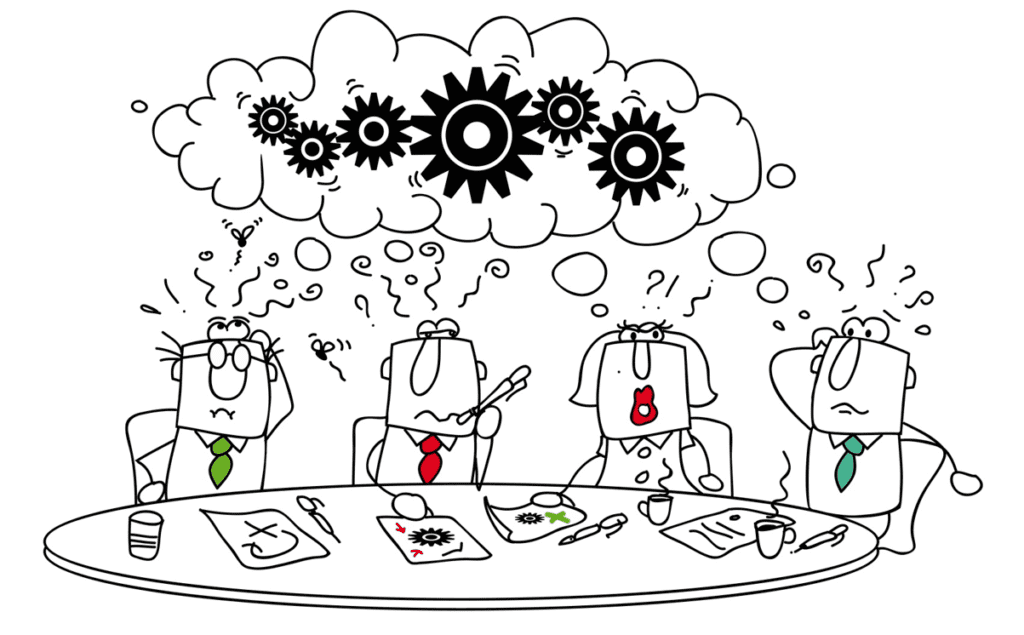Posts by Valerie Patrick
A Foundation for NeuroLeadership
Neuroleadership is about applying research findings from neuroscience, behavioral science, and psychology to leadership. Specifically, understanding how the brain works is a science-based way for leaders to improve results. One really cool thing about the human brain is that the structure and biochemistry of the brain is incredibly consistent from one person to the next.…
Read MoreNeuroscience Perspective on What is NLP
There should be a neuroscience perspective on what is NLP because NLP, neurolinguistic programming, includes the syllable “neuro.” When Dr. Nancy Mramor, a licensed clinical, media and health psychologist, explains what NLP is, she says it’s based off the work of genius hypnotherapist Milton Erickson (https://fulcrumconnection.com/blog/025-improve-rapport-nlp/.) I have to admit that when I hear the…
Read MoreInnovation takes Collaboration
Innovation takes Collaboration is a reboot of a 2014 blog post: https://fulcrumconnection.com/blog/collaborate-to-innovate/. Creativity to address the five key challenges of innovation often takes collaboration. One challenge of innovation is identifying a need whether articulated or not. For example, you can brainstorm current societal, economic, and technology trends with others and then identify current products or…
Read MoreTechnical People Have Social Skills Too
The social awkwardness of Sheldon, Leonard, Howard and Raj on the Big Bang Theory is funny and entertaining because these characters represent relatable, though exaggerated, versions of technical people we have met or have known. Ironically, the most socially savvy people I have known also happen to have technical degrees. It turns out that these…
Read MoreHow to Achieve the Prerequisite for Team Performance
The reason it is difficult to achieve the prerequisite for team performance is because the skills involved are not valued in today’s U.S. workforce. The prerequisite for team performance is meeting the social needs of team members. Social needs, in turn, are the number one trigger of emotions according to Dr. Vanessa Druskat (Episode 24…
Read MoreThe Elements of Success as you Climb the Hierarchy
I got interested in how to clarify the elements of success as you climb the hierarchy when Lauren Leader-Chivee, author of Crossing the Thinnest Line: How Embracing Diversity from the Office to the Oscars Makes America Stronger, brought up the topic on my podcast show (episode 23 at http://scienceofsuccess.libsyn.com/podcast). I realized that tips on how…
Read MoreGetting Back on Track When Thrown out of Whack
When something goes out of whack socially, it can throw you off track. When you’re thrown off track, it’s typically because something someone said or did triggered an unhelpful emotion such as self-doubt, fear, anger, or jealousy. Unhelpful emotions are the emotions that get in the way of contribution. There is something you can do…
Read MoreTo Manage or Not to Manage Performance
Performance management is the wrong tool when it comes to knowledge work. Don’t get me wrong – there is a place for performance management. However, knowledge work and performance management don’t work well together. To manage means to be in charge of and performance is accomplishing a task or activity. Someone being in charge of…
Read MoreThe Hard Stuff is the Good Stuff
Aerobic exercise is an example of hard stuff that leads to good stuff. The hard stuff is the aerobic exercise: a minimum of 15 minutes of continuous cardiovascular exercise at least 3 times a week. The good stuff is that aerobic exercise correlates with increased brain health and decreased risk of Alzheimer’s and dementia (http://www.brainrules.net/exercise).…
Read MoreThe Salience Barrier
Salience is when a trait like gender becomes more prominent and a salience barrier is when the salience results in undesirable consequences. Imagine a female manager walking into her first staff meeting and it is a room full of men. Her gender has become salient. The men in the room will naturally change their behavior…
Read More









